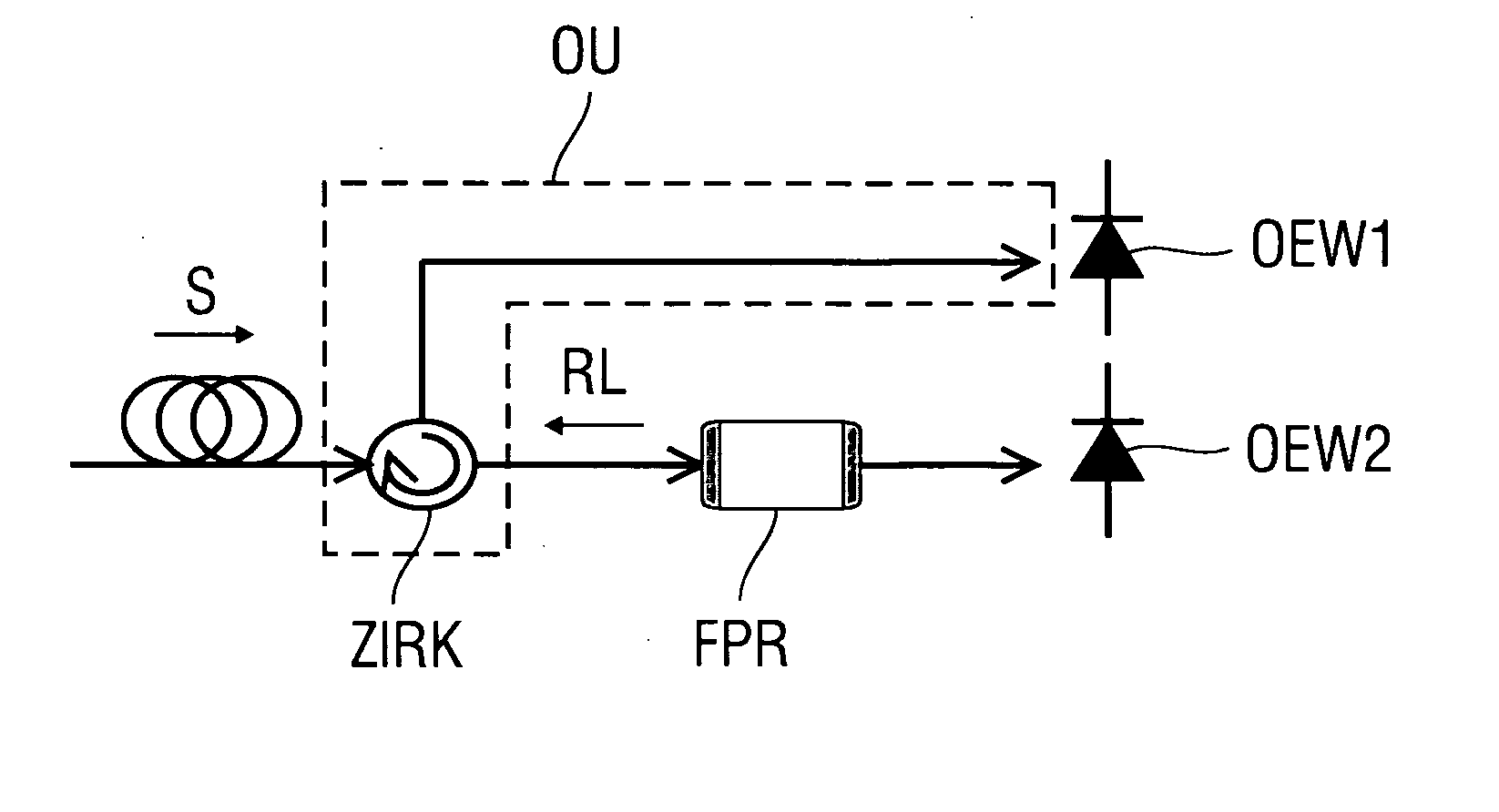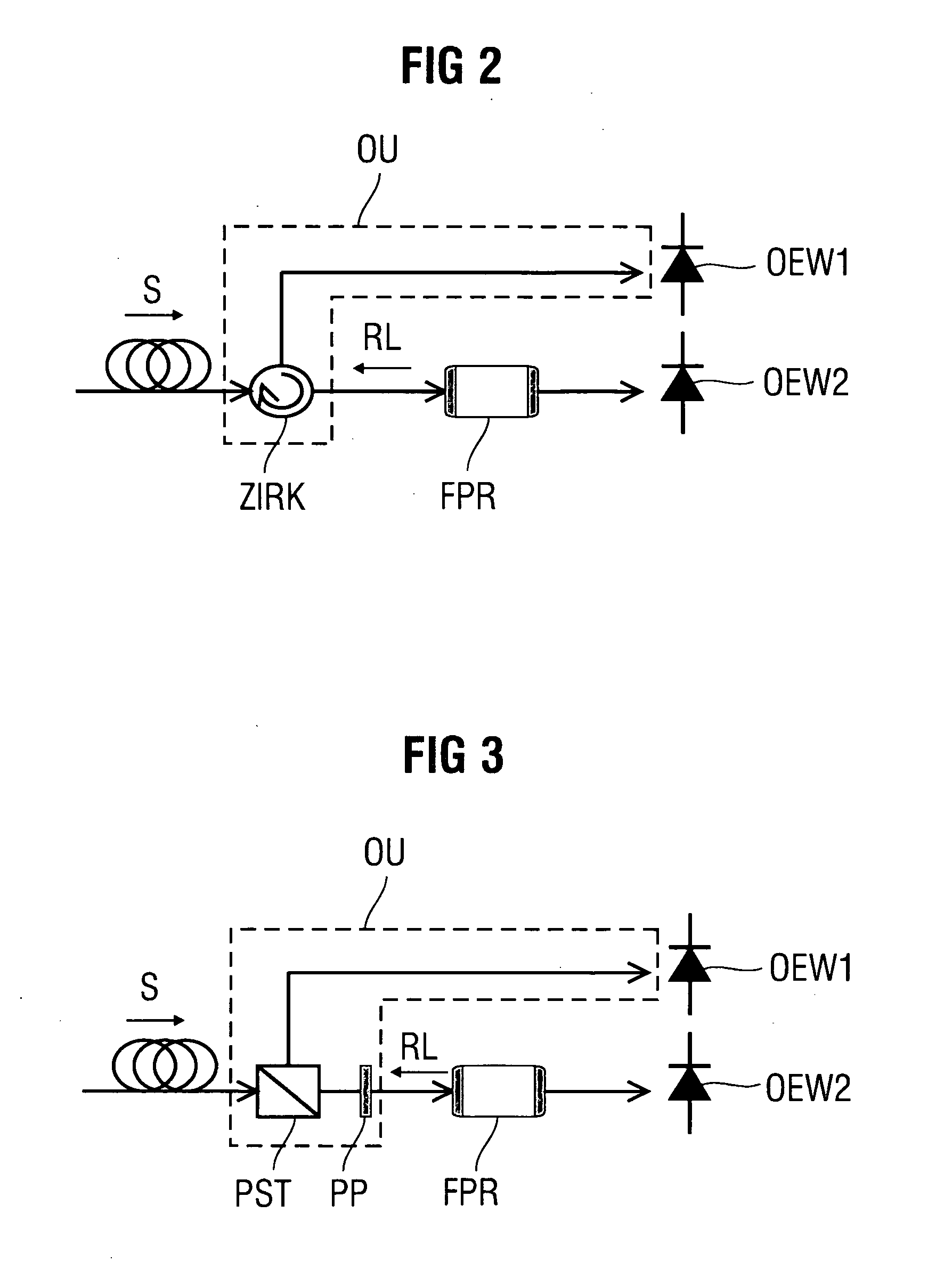Receiver for angle-modulated optical signals
a technology of optical signals and receivers, applied in electromagnetic receivers, electrical equipment, electromagnetic transmission, etc., can solve the problems of both optical fields interfering on a photodiode, and no longer sufficed simple photodiodes to extract information from phase- or frequency-modulated signals
- Summary
- Abstract
- Description
- Claims
- Application Information
AI Technical Summary
Benefits of technology
Problems solved by technology
Method used
Image
Examples
Embodiment Construction
[0023]FIG. 1 shows the value of an improvement factor α of the signal-to-noise ratios between a conventional homodyne receiver and the receiver according to the invention as a function of the signal-to-noise ratios of the input light SNRIn=ES2EN2,
where ES denotes the signal field and EN denotes the noise field of the input signal at the optical resonator.
[0024] To clarify the invention in relation to the optical resonator, important resonator parameters will now be explained.
[0025] The characteristics of an optical Fabry-Perot resonator consisting of two mirrors with reflectivity R and spacing L are determined (in simplified form) by the following parameters: [0026] 1. A free spectral range FSR specifies the frequency spacing of the resonator modes. FSR=C2L
where c is the speed of light. [0027] 2. A half-power beamwidth Δv of the resonance is given by Δ𝓋=C2L*1-RnR.[0028] 3. This yields the following relationship for the finesse F as the quotient of the free spectral range ...
PUM
 Login to View More
Login to View More Abstract
Description
Claims
Application Information
 Login to View More
Login to View More - R&D
- Intellectual Property
- Life Sciences
- Materials
- Tech Scout
- Unparalleled Data Quality
- Higher Quality Content
- 60% Fewer Hallucinations
Browse by: Latest US Patents, China's latest patents, Technical Efficacy Thesaurus, Application Domain, Technology Topic, Popular Technical Reports.
© 2025 PatSnap. All rights reserved.Legal|Privacy policy|Modern Slavery Act Transparency Statement|Sitemap|About US| Contact US: help@patsnap.com



